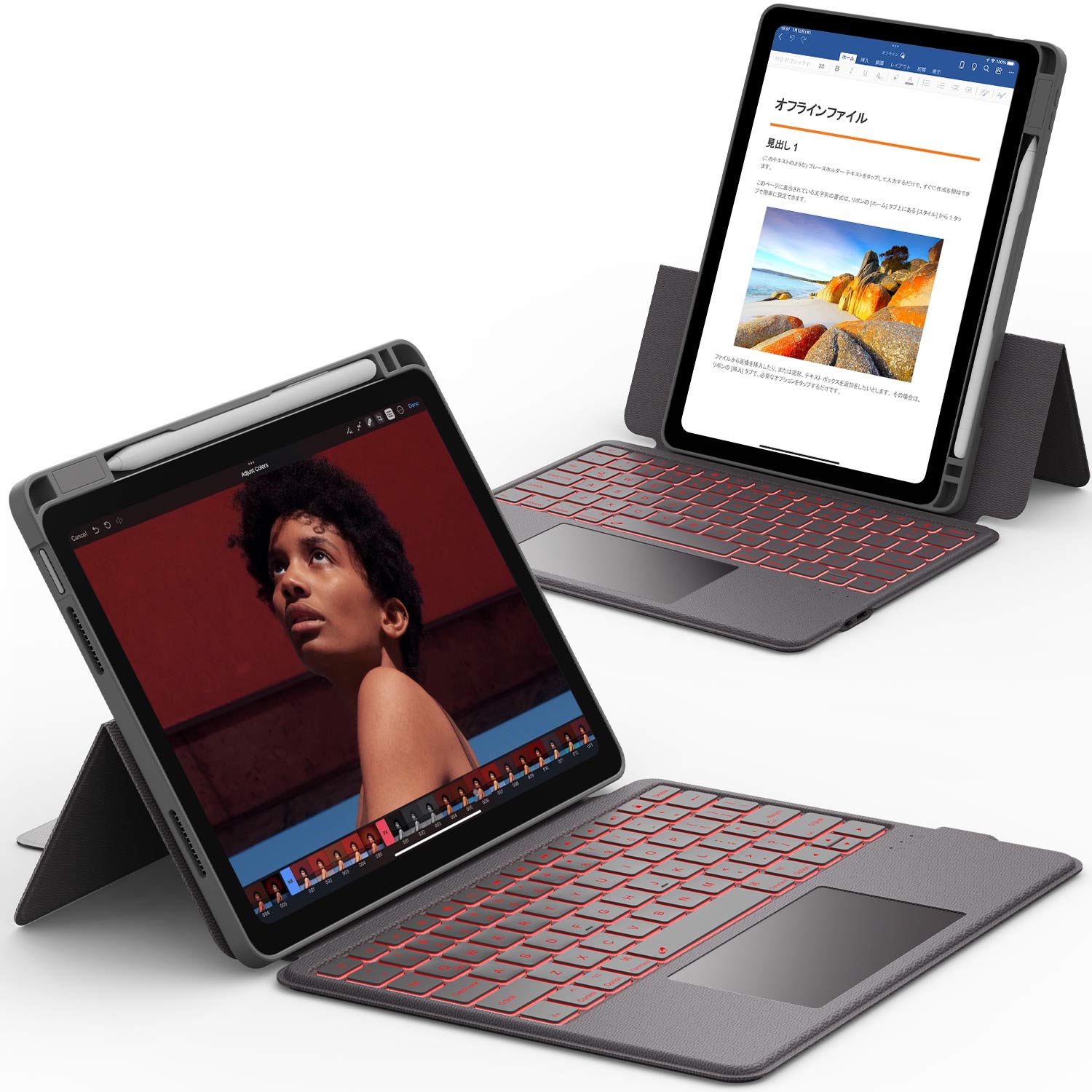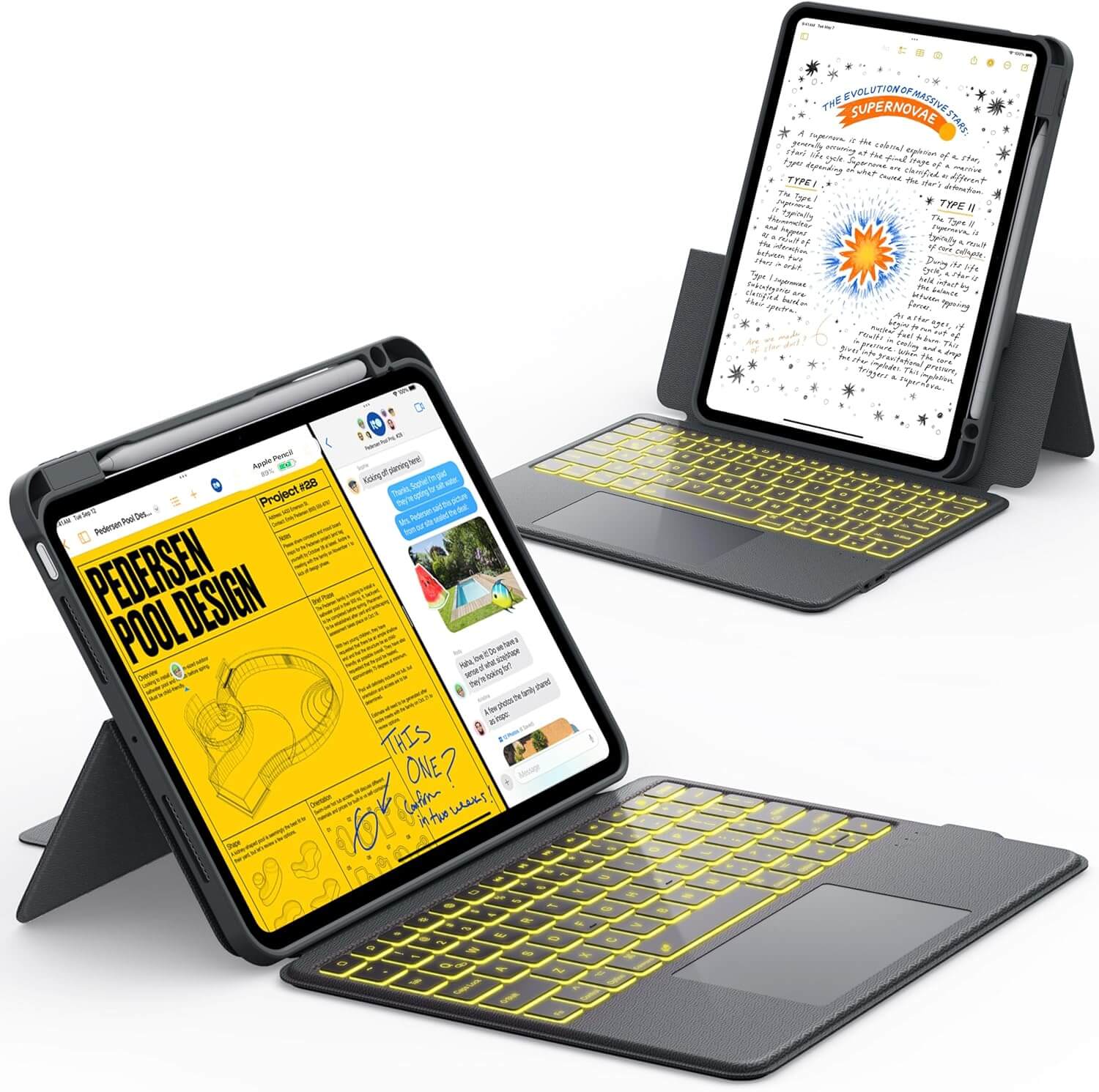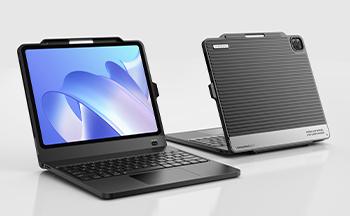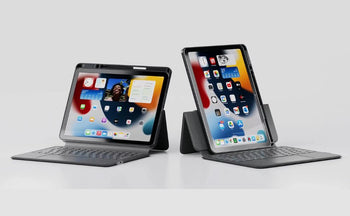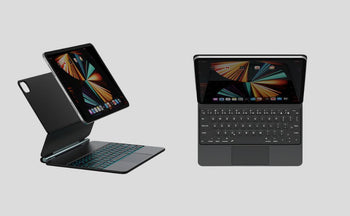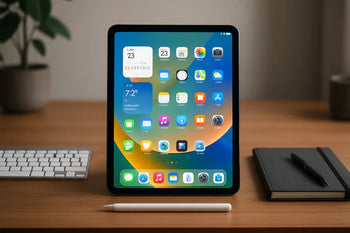Ever started using maps on your iPhone and wished you could switch to your iPad for a bigger view?
You can do that by changing which device shares your location. You can switch your location from iPhone to iPad by using the Find My app and setting your iPad as the device that shares your location.
This makes it easy to keep your location active on the device of your choice. Whether you want easier navigation, better visibility, or just a smoother setup, knowing how to switch location from iPhone to iPad saves time and effort.
Quick Insights 💡:
- Open Settings on your iPad
- Tap your Apple ID > Find My > Share My Location
- Toggle it on for iPad and off for iPhone
- Ensure both devices use the same Apple ID
- Now your iPad will share location instead of your iPhone
You May Also Like 👍
Why Switch Location from iPhone to iPad?
You may want to set your iPad as your main location if you use it more often than your iPhone. This makes sure your apps and services use the correct device for location data.
If you share your location with family, switching to your iPad can be helpful. For example, if you leave your iPhone at home but carry your iPad, your family will still see where you actually are.
Using your iPad as the primary device also helps if you travel or work with it more often than your iPhone. Apps like Maps, Calendar, and Reminders will give you better results when they know the right device to track.
It can also protect your iPad in case it gets lost or stolen. If the iPad is set as your main location, you can track it more easily through the Find My app.
Common reasons to switch location to your iPad include:
- Share iPad location with family instead of iPhone
- Use iPad as your main travel or work device
- Keep track of iPad if it is lost or stolen
- Make sure location-based apps work correctly
This change gives you more control over which device shows your location and makes sure your iPad is easier to manage day to day.
How to Switch Location from iPhone to iPad – Step by Step
You need to ensure that both devices use the same Apple ID, adjust the location sharing settings on your iPad, and then turn off sharing on your iPhone. Once you finish, you can confirm the change in the Find My app to see which device is now sharing your location.
Step 1 – Sign In with the Same Apple ID
Your iPhone and iPad must be signed in with the same Apple ID. This is the only way Apple can link your devices and allow you to switch location sharing between them.
On your iPad, open Settings and tap your name at the top. Verify that the Apple ID matches the one associated with your iPhone. If it does not, sign out and log in with the correct account.
If you use different Apple IDs on each device, you cannot switch location sharing. Both devices need to be tied to the same iCloud account for the feature to work.
Step 2 – Open Settings on iPad
Once you confirm the Apple ID, go to your iPad Settings. Tap your name, then select Find My.
Inside the Find My menu, tap Share My Location. This section controls which device is currently sharing its location with your Apple ID.
If you do not see the option, make sure Location Services are turned on under Privacy & Security > Location Services. Without this, your iPad cannot share its location.

Step 3 – Turn on Location Sharing from iPad
To make your iPad the main device, turn on Share My Location. This will set the iPad as the default device for location sharing with family and friends.
When you enable this, your iPad will now report its location to services like Find My and Family Sharing. This is useful if you plan to leave your iPhone behind or want your iPad to act as your main device for tracking.
It is important to keep your iPad connected to Wi-Fi or cellular data. Without an internet connection, the location may not update correctly.
Step 4 – Disable Location Sharing from iPhone
Now you need to stop your iPhone from sharing its location. On your iPhone, open Settings, tap your name, then go to Find My > Share My Location.
Toggle the setting off so the iPhone is no longer the active device. This step ensures your iPad is the only device sharing your location.
If you skip this, your iPhone may still override the iPad. Always confirm the iPhone setting is disabled before moving on.
Step 5 – Confirm in “Find My” App
Open the Find My app on either device to check which one is sharing location. Tap the Me tab at the bottom of the screen.
You should see a line that says This Device is Being Used for Location under your iPad. If it still shows your iPhone, repeat the steps above to adjust the settings.
To double-check, you can also log in to iCloud.com and open Find My. The device listed there should match your iPad if the switch worked.
Also Read: iPad Not Charging? Try These 4 Troubleshooting Steps
Alternative Methods to Manage Location Sharing

You can manage location sharing in various ways if you don't want to switch devices directly. These options let you control how your iPad or iPhone shares location with family members, through iCloud, or within specific apps.
Family Sharing
Family Sharing lets you share your iPad’s location with people in your family group. Once you set it up, they can see your iPad’s location in the Find My app on their own devices. This is useful if you want others to track your iPad instead of your iPhone.
To set it up, go to Settings > [your name] > Family Sharing > Location Sharing. From there, make sure location sharing is turned on and that your iPad is the selected device.
With Family Sharing, you can:
- Share location automatically with all family members.
- Choose which family members can see your location.
- Stop sharing at any time in the same menu.
This method is simple if you already use Family Sharing for purchases or screen time. It also keeps location sharing consistent across multiple Apple devices.
iCloud.com
You can also manage location sharing through iCloud.com. This is helpful if you do not have your iPhone or iPad in hand but still need to check or adjust location settings.
Log in to iCloud.com with your Apple ID and open the Find My iPhone feature. From there, you can see which device is currently sharing its location. If your iPad is online, you can view its exact position on the map.
While you cannot directly switch the sharing device from iCloud.com, you can confirm which device is active. This makes it easier to troubleshoot if your iPhone is still showing up instead of your iPad.
Using iCloud.com is also a good backup method if your iPad is lost. You can play a sound, mark it as lost, or erase it remotely.
App-Specific Location Settings
Some apps use location data in different ways. You can control which device they pull location from by adjusting settings directly on the iPad. This is useful if you want apps like Maps, Reminders, or Weather to rely on your iPad’s location instead of your iPhone.
Go to Settings > Privacy & Security > Location Services on your iPad. From here, you can:
- Turn location services on or off for each app.
- Set options like Never, Ask Next Time, or While Using the App.
- Check if apps are using precise or approximate location.
By customizing these settings, you make sure apps use the most relevant device for location-based features. This gives you more control without needing to switch the main location device every time.
Also Read: Can You Put WhatsApp on an iPad? (Or Other Messaging Apps)
Troubleshooting Common Issues When Switching Location
When you move location settings from your iPhone to your iPad, problems can appear if the devices do not sync correctly, if your Apple ID is not linked properly, or if Location Services are disabled. These issues are usually easy to fix once you know where to look.
Devices Not Showing Correct Location
If your iPhone or iPad shows the wrong location, start by checking that both devices are connected to Wi-Fi or cellular data. Location accuracy often depends on a strong internet connection.
Restarting your device can also help. A quick restart refreshes the system and clears temporary errors that may cause location mismatches.
You should also check Settings > Privacy & Security > Location Services. Make sure Location Services is turned on for both devices. If it is off on one device, the location will not sync properly.
A weak GPS signal indoors can also cause problems. Try moving closer to a window or going outside to see if the location improves.
Apple ID or Find My App Not Syncing
If your devices are not syncing location data, confirm that you are signed in with the same Apple ID on both devices. Using different accounts will prevent the Find My app from sharing accurate location information.
Go to Settings > [Your Name] > iCloud and make sure Find My iPhone or Find My iPad is enabled. Without this setting, location data will not update across devices.
Sometimes the Find My app does not refresh right away. You can pull down on the screen inside the app to force a manual refresh.
If syncing still fails, sign out of iCloud on one device, restart it, then sign back in. This often clears account-related syncing issues.
Location Services Not Working Properly
If Location Services are on but still not working, check app permissions. Go to Settings > Privacy & Security > Location Services and confirm that apps like Find My have permission set to While Using the App or Always.
Update your iPhone and iPad to the latest iOS version. Outdated software can cause problems with GPS accuracy and syncing.
You should also reset location settings if the problem continues. Go to Settings > General > Transfer or Reset iPhone > Reset > Reset Location & Privacy. This will restore default settings and clear any incorrect permissions.
If nothing works, contact Apple Support since the issue may be related to hardware or your Apple ID account.
Conclusion
Knowing how to switch location from iPhone to iPad unlocks a new level of convenience and functionality within the Apple ecosystem.
Whether you're using the simple live-sharing of Find My, quickly forwarding a destination with Maps, or employing advanced GPS spoofing for specific tasks, you can now keep your devices perfectly in sync.
Remember, the key to success is ensuring your fundamental settings are correct: the same Apple ID, Location Services on, and a good internet connection.
👉 Want to protect your iPad while using it on the go? Explore Chesona’s best iPad accessories:
FAQs About How to Switch Location from iPhone to iPad
You can move your location between devices, but only one device at a time can share it. If your iPad is not showing as your location, you may need to adjust settings in the Find My app or check that location services are enabled.
Can I change my location from my iPhone to my iPad?
Yes. Open the Find My app on your iPad, go to the Me tab, and tap Use This iPad as My Location. This will switch your location from your iPhone to your iPad.
How do I change my location to a different Apple device?
On the device you want to use, open the Find My app. Go to the Me tab and select Use This [device] as My Location. Your Apple ID will now share the location of that device.
Why is my location not switching to my iPad?
Your iPad may not have location services turned on. Go to Settings > Privacy & Security > Location Services and make sure it is enabled. Also check that your iPad is signed in with the same Apple ID as your iPhone.
Can I share the location from two devices?
No. You can only share your location from one Apple device at a time. If you switch it to your iPad, your iPhone will stop sharing until you switch it back.
Can I turn my location on from another device?
No. You must turn on location services directly from the device itself. You cannot enable or disable location remotely from another Apple device.
